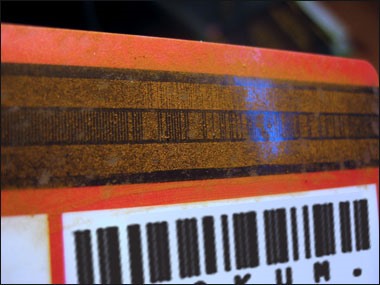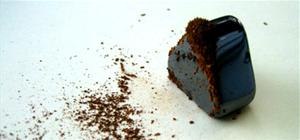Tetherd Cow Ahead posts an interesting science experiment. All you really need is a little bit of iron powder and a magnet, and you can unveil the info behind the magstripe on a credit card.
 You will need:
You will need:
- A small amount of fine iron powder or iron oxide
- A magnet
- An old credit card or similar swipe card
- A magnifying glass
Tetherd Cow Ahead says:
"Amazing! The fine particles clearly delineate the data on the card! What we're seeing here tells us lots about how a credit card works. First of all, you will notice that the card has three horizontal magnetic bands. This is the standard for all swipe cards. In most cases, information is recorded on one, or sometimes two of these bands. The two outside bands are called high density tracks and contain data at 210 bits per inch.

If you know anything about computers, you will realize that the term 'high density' here is relative: 210 bits per inch, by modern data standards, is pretty damn lousy. To give you some idea, one of these tracks can carry about 79 x 6bit alphanumeric characters.

Your credit card would typically have, on track 1, your name, your card number and an expiry date. That's it. Not much."
Click through for the HowTo.
Just updated your iPhone? You'll find new emoji, enhanced security, podcast transcripts, Apple Cash virtual numbers, and other useful features. There are even new additions hidden within Safari. Find out what's new and changed on your iPhone with the iOS 17.4 update.

























Be the First to Comment
Share Your Thoughts